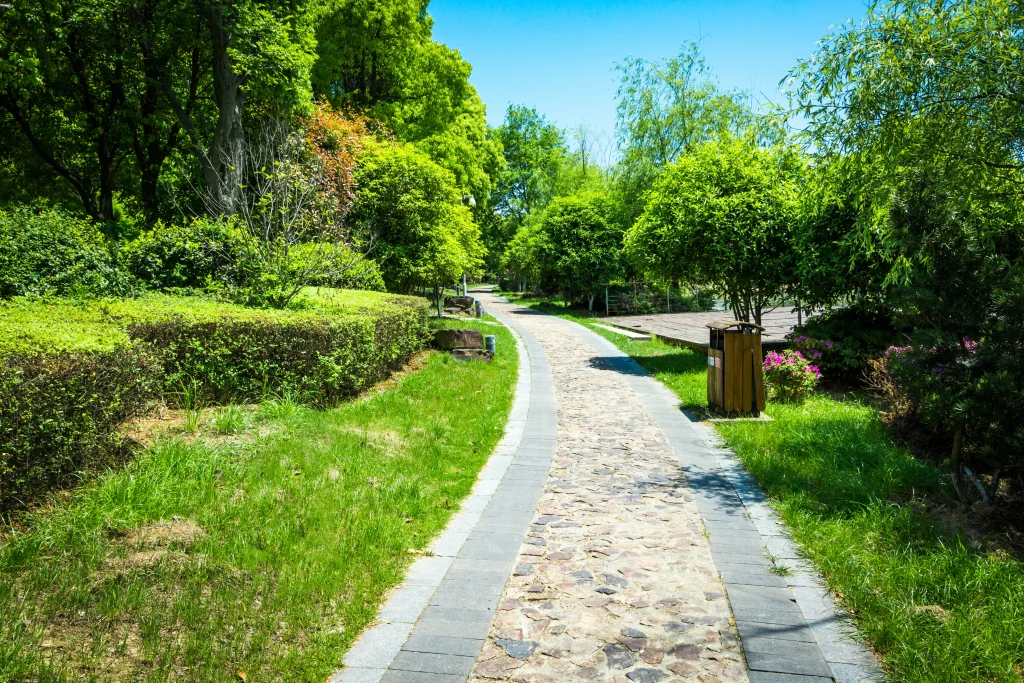You must know that traditional lawns and water-hungry plants struggle against Denver’s intense sun, sudden temperature shifts, and limited rainfall. Smart plant selection transforms these challenges into opportunities.
Xeriscape landscaping with Colorado-adapted plants offers practical solutions that reduce water bills, minimize maintenance demands, and support local wildlife. These species have evolved to thrive in Colorado’s distinctive conditions, delivering stunning results without constant irrigation.
This guide presents 15+ proven xeriscape plants Colorado that flourish in unpredictable weather patterns. Each selection provides specific benefits for Colorado homeowners ready to embrace water-wise landscaping.
What Makes a Plant Ideal for Xeriscaping in Colorado?
Successful xeriscaping in Colorado requires plants with specific survival traits. The state’s semi-arid climate, alkaline soils, and extreme weather variations demand species that can handle stress without supplemental water.
- Deep Root Systems form the foundation of drought tolerance. Plants with extensive root networks access moisture from deeper soil layers, surviving extended dry periods that surface-rooted species cannot endure.
- Sun Adaptation proves essential in Colorado’s high-altitude environment. Intense UV exposure and minimal atmospheric filtering require plants with natural sun protection mechanisms and heat tolerance.
- Soil Compatibility matters significantly in Denver’s clay-heavy, alkaline conditions. Ideal xeriscape plants colorado selections thrive in pH levels between 7.0-8.5 and handle poor drainage during spring snowmelt.
- Weather Flexibility enables plants to survive Colorado’s rapid temperature swings. Morning frost followed by afternoon heat demands species with cellular protection against thermal shock.
- Wildlife Benefits enhance ecosystem value while reducing maintenance. Plants that attract beneficial insects and birds create natural pest control systems, eliminating the need for chemical interventions.
15+ Top Xeriscape Plants for Colorado
Perennials: Color and Seasonal Interest
#1: Blanket Flower (Gaillardia aristata)
Blanket Flower delivers consistent color from late spring through first frost. This native perennial reaches 12-24 inches tall with an equal spread, producing vibrant yellow, orange, and red blooms that require no deadheading.
Full sun exposure and minimal water create optimal growing conditions. The extended bloom period and low maintenance requirements make this species ideal for sunny borders and pollinator gardens.
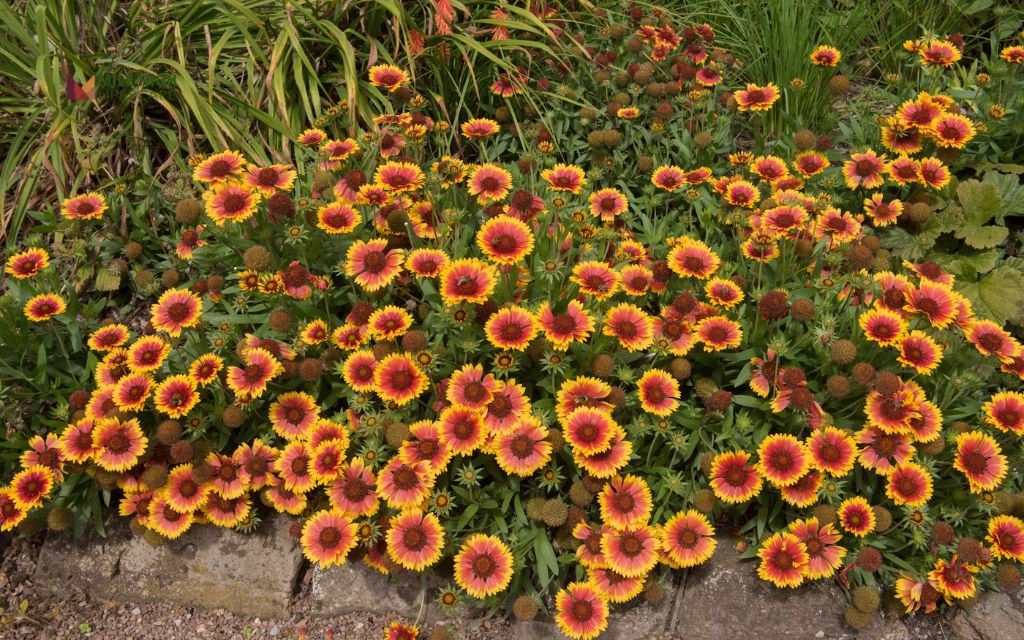
#2: Purple Coneflower (Echinacea purpurea)
Purple Coneflower stands 24-36 inches tall with pink-purple blooms appearing midsummer through fall. This adaptable perennial tolerates full sun to partial shade conditions once established.
The sturdy stems support large flower heads that attract bees, butterflies, and seed-eating birds. Mixed beds and wildlife gardens benefit from this species’ dual ornamental and ecological value.
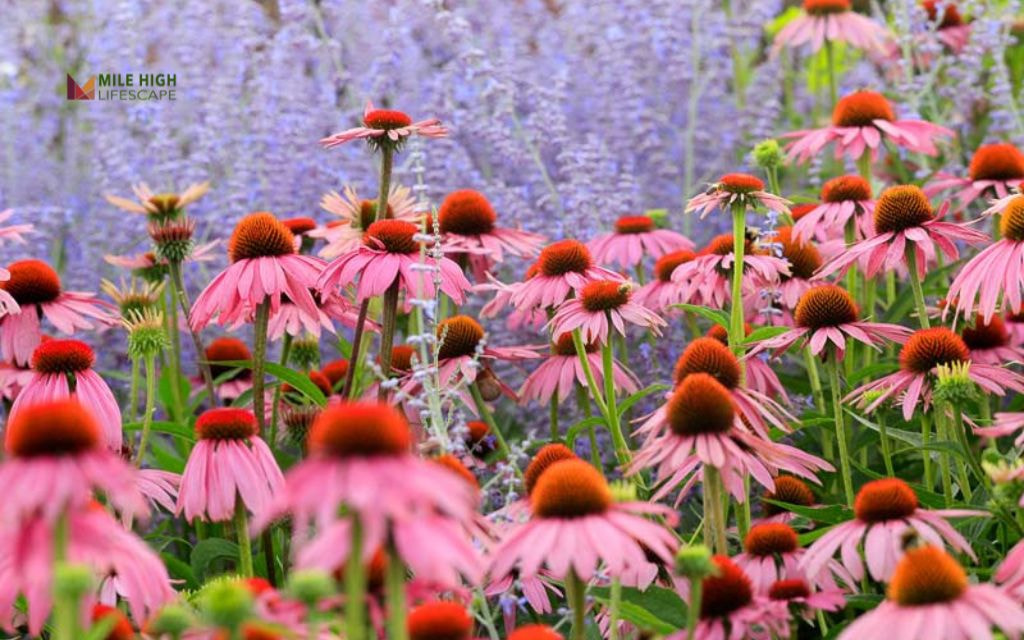
#3: Russian Sage (Perovskia atriplicifolia)
Russian sage creates dramatic vertical impact with lavender-blue flower spikes emerging mid to late summer above silvery foliage. This xeriscape colorado plant selection thrives in full sun with minimal water, offering deer resistance and exceptional heat tolerance.
The airy texture and extended bloom period make it valuable for adding height and movement to dry landscapes.
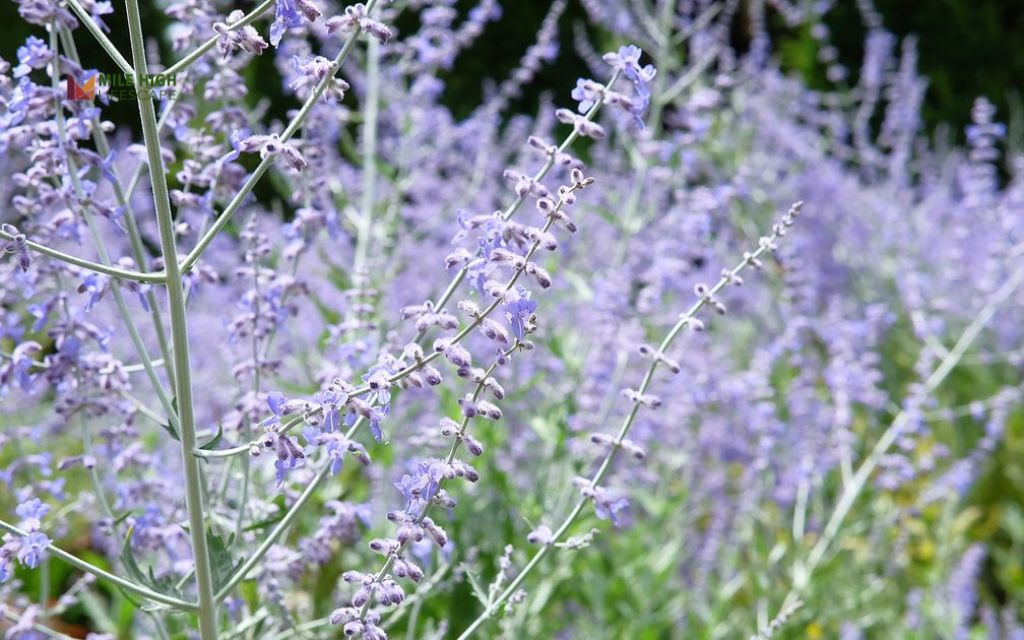
#4: Penstemon (Penstemon strictus or P. barbatus)
Penstemon produces striking flower spikes in early summer, reaching 18-36 inches tall. Blue, pink, or red tubular blooms attract hummingbirds while requiring only full sun and low water inputs.
The upright growth habit and pollinator appeal make penstemon essential for Colorado xeriscape plants collections.
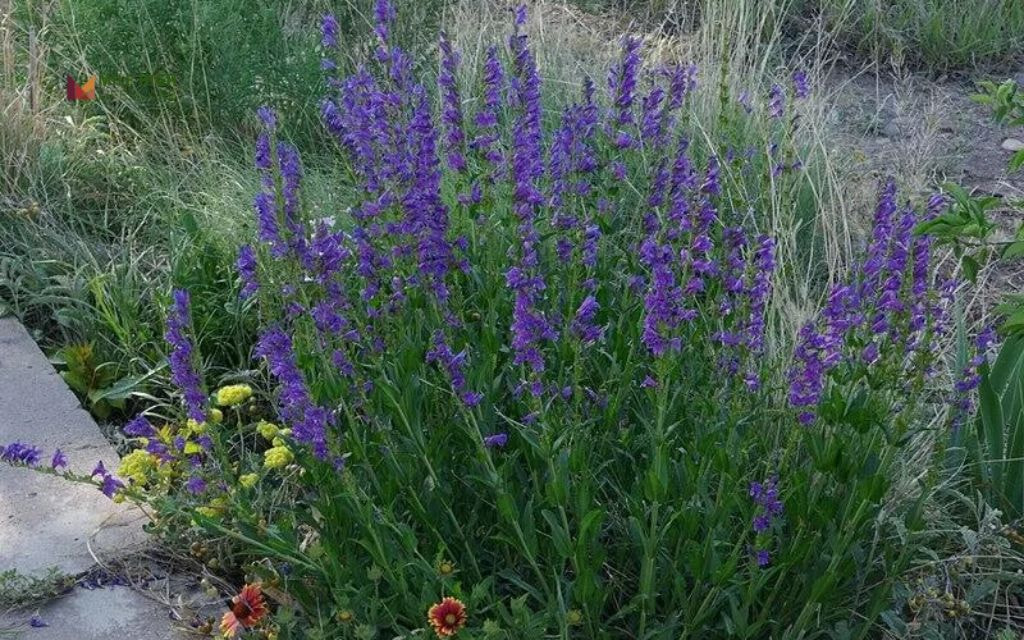
#5: Black-eyed Susan (Rudbeckia hirta)
Black-eyed Susan brightens landscapes with golden-yellow blooms from midsummer through fall. This perennial spreads 12-18 inches wide, naturalizing readily in suitable conditions.
Full sun exposure and moderate water support vigorous growth and extended flowering. The bold color and heat tolerance make this species valuable for high-impact plantings.
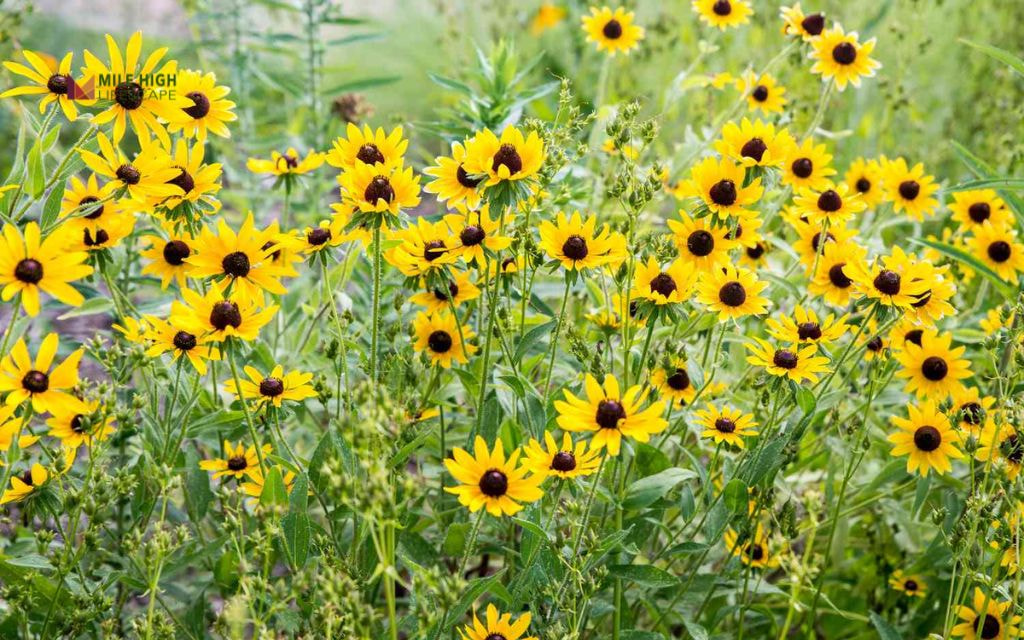
Groundcovers: Low-Spread and Erosion Control
#6: Creeping Thyme (Thymus serpyllum)
Creeping thyme forms dense mats 2-4 inches tall with 12-18 inch spreads. Purple-pink summer blooms release fragrance when walked upon, creating sensory appeal. Full sun and low water requirements suit this species for pathways, rock walls, and slope stabilization.
Moreover, the walkable nature and aromatic qualities make creeping thyme practical for a dog friendly xeriscape backyard.
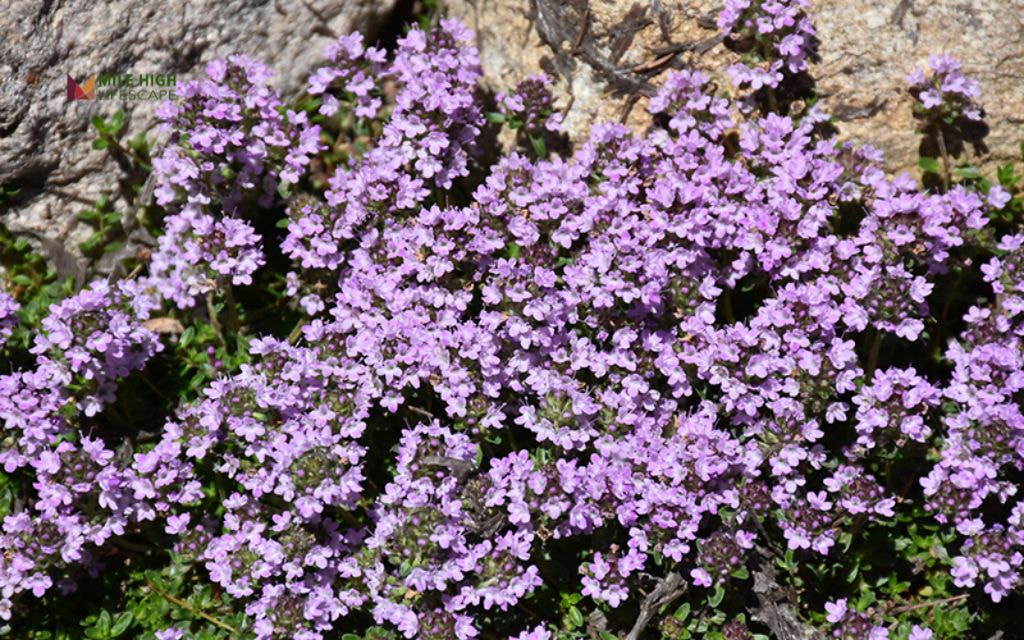
#7: Ice Plant (Delosperma cooperi)
Ice Plant provides intense color through neon pink-magenta flowers from late spring through summer. Rocky soils and slopes present ideal growing conditions for these xeriscape plants. The drought tolerance and vibrant blooms create stunning displays in challenging locations.
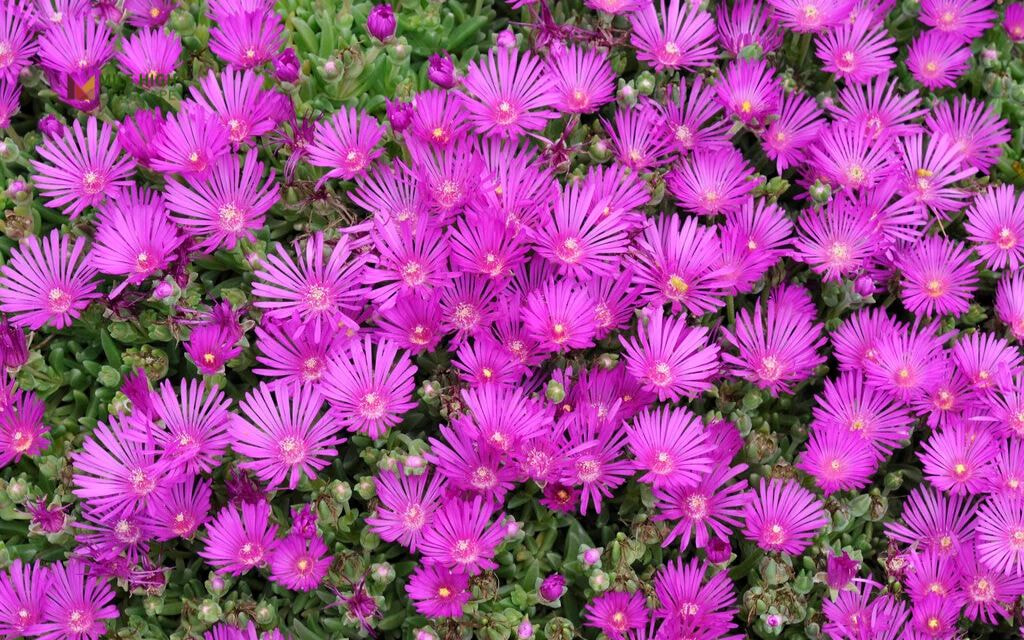
#8: Blue Flax (Linum lewisii)
Blue Flax produces delicate sky-blue flowers in early summer. This native species spreads 12-15 inches wide and reseeds readily in suitable conditions. Full sun and low water inputs support healthy growth and natural multiplication.
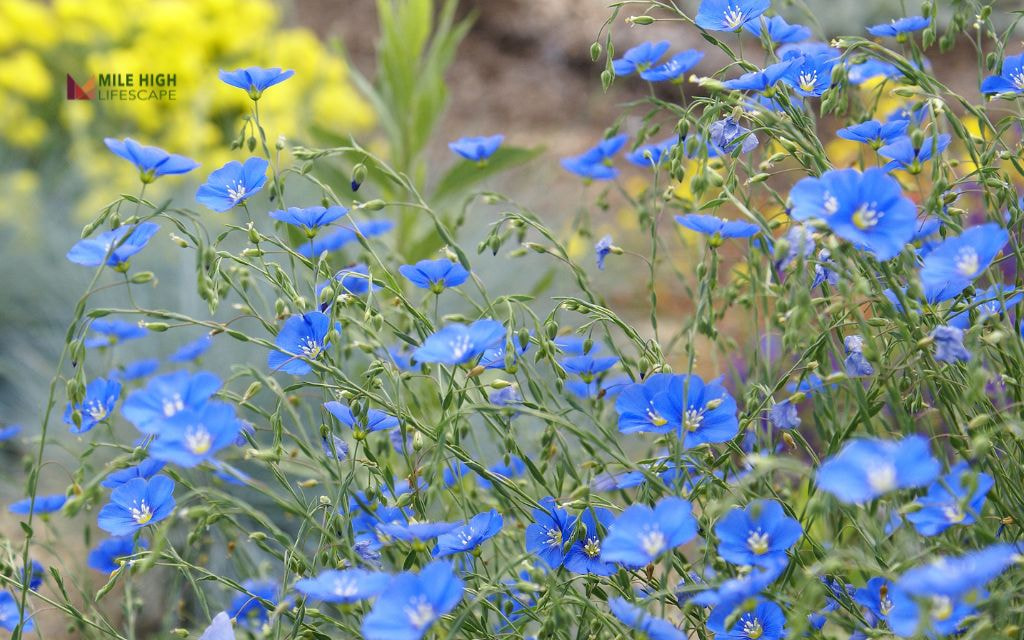
Ornamental Grasses: Texture and Movement
#9: Blue Grama Grass (Bouteloua gracilis)
Blue Grama Grass serves as Colorado’s native alternative to traditional turf. This grass produces distinctive eyelash-shaped seed heads in late summer. The dense growth habit and minimal maintenance needs suit areas where conventional lawns fail.

#10: Little Bluestem (Schizachyrium scoparium)
Little Bluestem transforms through seasons, displaying green-blue summer foliage that turns rust-orange in fall.
Erosion-prone slopes benefit from this species’ extensive root system and soil-binding capabilities. The seasonal color changes and vertical texture enhance Denver xeriscape plants compositions.

#11: Muhly Grass (Muhlenbergia reverchonii)
Muhly Grass creates ethereal effects through soft pink or lavender plumes in late summer. This grass maintains compact 2-foot spreads while producing dramatic flowering displays. Low to moderate water requirements and full sun tolerance suit this species for accent plantings.
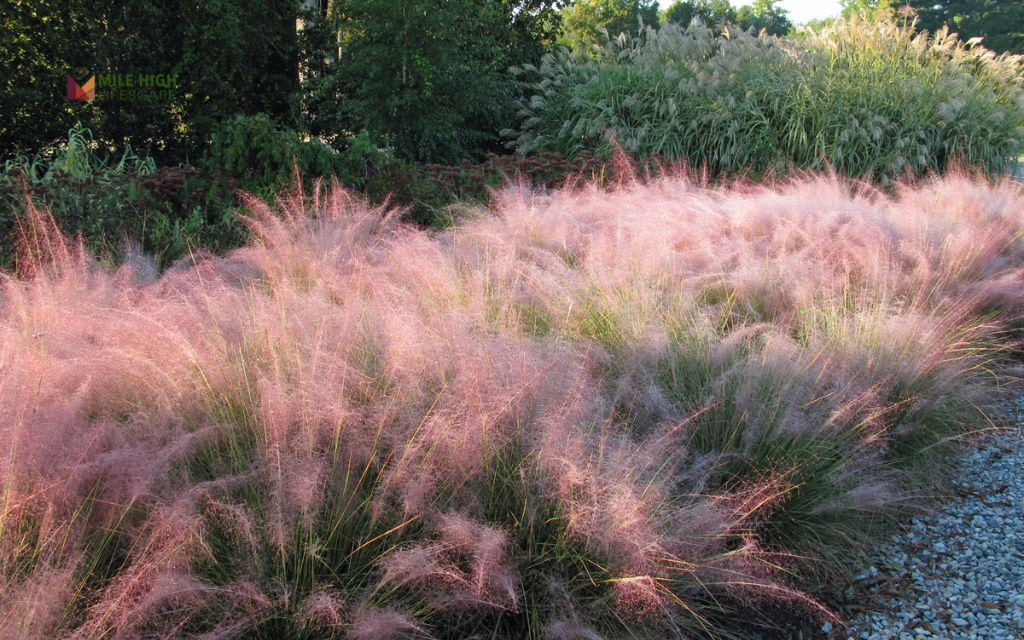
Shrubs and Structural Plants: Height and Privacy
#12: Rabbitbrush (Ericameria nauseosa)
Rabbitbrush delivers late-season color through masses of yellow blooms in fall. This native shrub reaches 3-5 feet tall with 3-6 foot spreads, requiring only full sun and minimal water. Wildlife value includes nectar for butterflies and seeds for birds. Roadside borders and natural areas benefit from this species’ toughness and ecological contributions.
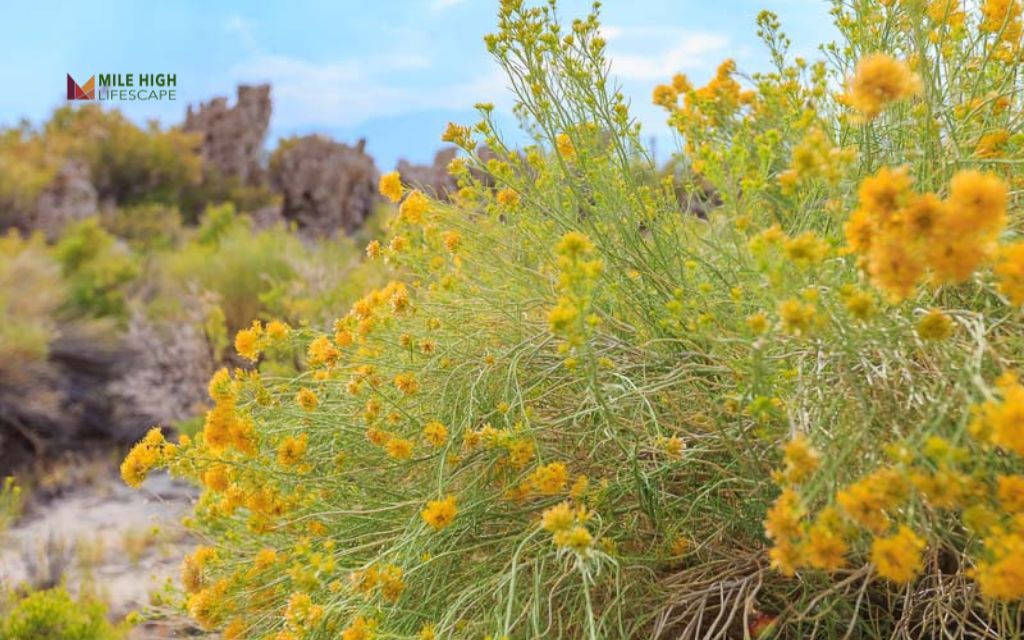
#13: Sand Cherry (Prunus besseyi)
Sand Cherry provides multi-season interest through white spring blossoms and purple fall foliage. This compact shrub grows 3-6 feet tall, adapting to full sun and low water conditions. The dense growth habit suits hedge applications while offering ornamental value.
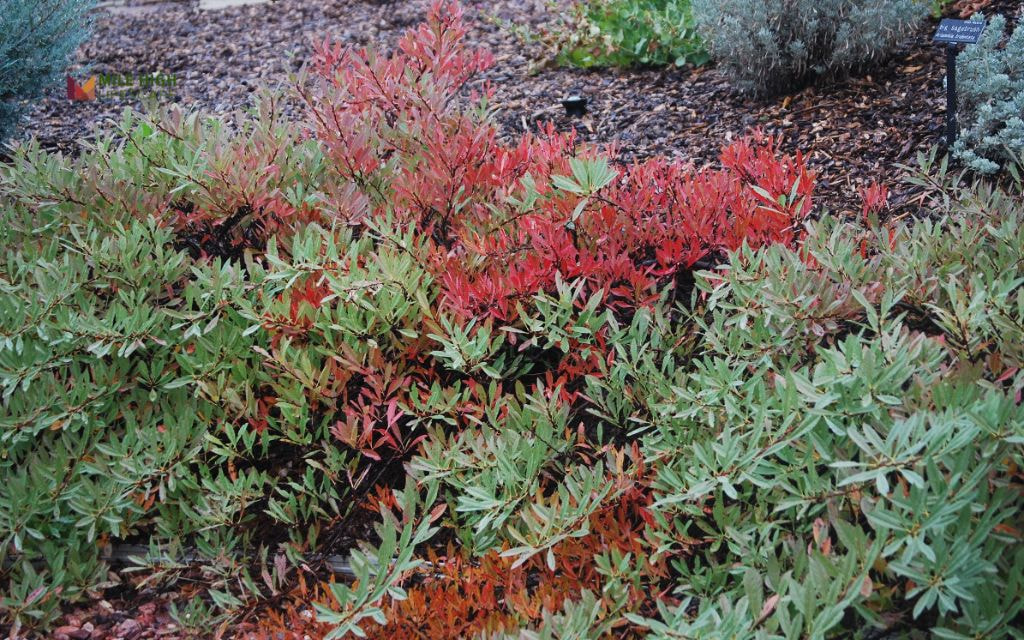
#14: Fernbush (Chamaebatiaria millefolium)
Fernbush combines unique foliage with summer flowering displays. This shrub produces white flower clusters above fern-like leaves with sage-like fragrance. Full sun and low water requirements suit this species for background plantings and natural barriers. The distinctive texture and aromatic qualities create sensory appeal in dry landscapes.
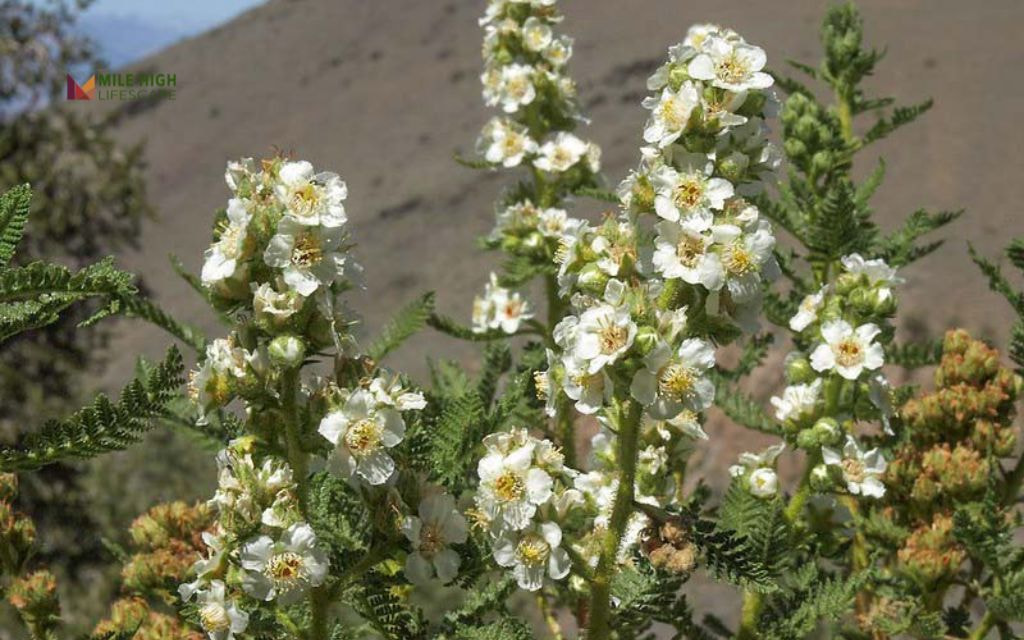
Succulents and Accent Plants
#15: Red Yucca (Hesperaloe parviflora)
Red Yucca creates architectural focal points through evergreen rosettes and coral flower stalks. This 2-3 foot tall plant produces summer blooms that attract hummingbirds. The structural form and reliable performance make red yucca valuable for contemporary xeriscape ideas Colorado.
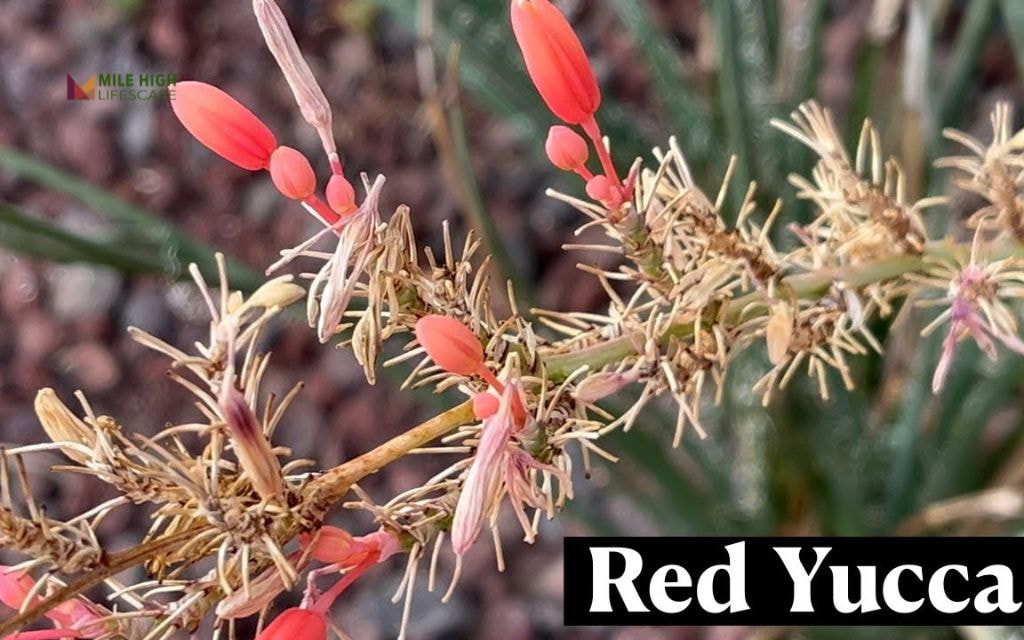
#16: Hens and Chicks (Sempervivum spp.)
Hens and Chicks offer year-round color through compact rosettes in various sizes and hues. Rock gardens, containers, and hardscape gaps benefit from these plants’ adaptability and minimal requirements. The diverse forms and easy propagation make these species popular for detailed plantings.

#17: Desert Four O’Clock (Mirabilis multiflora)
Desert Four O’Clock produces evening-opening magenta flowers from summer through fall. The sprawling habit suits large dry spaces where other plants struggle. Late-day flowering provides unique timing for evening garden enjoyment.
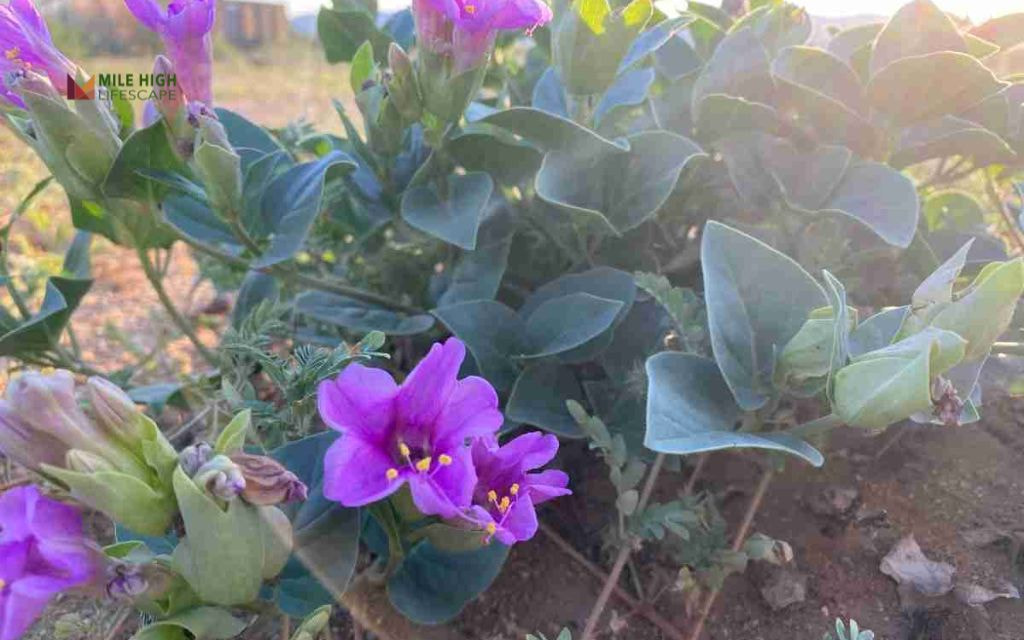
Xeriscape Plants Colorado Tips for Success
Timing Matters
Timing matters for the xeriscape plant in Colorado. Spring planting after soil thaw allows full growing season development before winter stress. Early fall installation provides cool-weather establishment without summer heat pressure. Avoid midsummer planting when heat stress compromises root development.
Soil Preparation
Soil preparation proves crucial in Denver’s conditions. Dig wide planting holes rather than deep ones to encourage lateral root spread. Clay soils benefit from organic matter incorporation, but avoid creating drainage sumps that collect water. Native plant installations often succeed with minimal soil amendments.
Mulching Strategy
Organic mulches retain soil moisture and suppress weeds while decomposing to improve soil structure. Inorganic mulches like gravel provide permanent solutions that complement xeriscape aesthetics. Maintain 2-3 inch mulch depths while keeping material away from plant stems.
Hydrozoning Principles
Hydrozoning principles optimize water efficiency through strategic plant grouping. Cluster plants with similar water requirements to simplify irrigation and prevent overwatering. Separate high-water accent plants from drought-tolerant masses to maintain distinct management zones. This approach supports both plant health and water conservation goals.
Spacing Considerations
Spacing considerations accommodate mature plant sizes to prevent overcrowding. Xeriscape plants often have extensive root systems that require adequate space for development. Proper spacing improves air circulation, reduces disease pressure, and eliminates competition for resources.
Check out this guide to learn how to xeriscape your yard step by step. If you need inspiration, use these free xeriscape design templates to guide proper spacing and ensure optimal plant health.
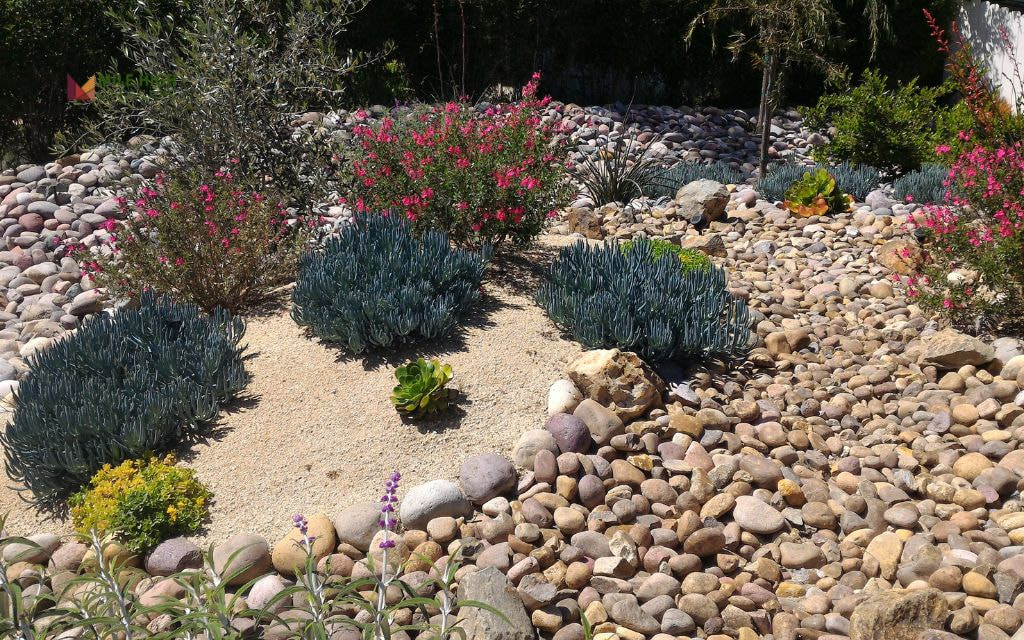
Conclusion
Colorado’s unique climate rewards gardeners who choose plants adapted to local conditions rather than fighting natural limitations. Xeriscape plants Colorado selections provide beauty, functionality, and sustainability while reducing maintenance burdens and resource consumption.
Successful results start by knowing how to xeriscape your yard based on your site conditions and selecting appropriate plants for each location. Start with proven performers like native grasses and drought-tolerant perennials, then expand your plant palette as confidence and experience grow.
Water-wise landscapes offer freedom from constant irrigation, reduced utility costs, and enhanced property value. These benefits compound over time as established plants require minimal inputs while providing maximum visual impact.
If you need help…?
Mile High Lifescape brings decades of xeriscape Colorado experience to help homeowners create stunning xeriscape gardens.
Our team understands local growing conditions and can recommend the perfect plant combinations for your specific goals and site requirements. Contact us to transform your landscape with plants that love Colorado’s climate as much as you do.
Frequently Asked Questions (FAQs)
What are the best plants for xeriscaping?
To prepare ground for xeriscaping, you should focus on drought-tolerant species adapted to your local climate. In Colorado, the best options include native grasses like blue grama, perennials such as blanket flower and purple coneflower, and structural plants like rabbitbrush and sand cherry.
What plants work best in part-shade xeriscape areas?
For xeriscaping in part-shade areas, consider plants like columbine, coral bells, lady’s mantle, and certain varieties of hostas. These plants thrive in partial shade and are adapted to drier conditions, making them suitable for water-wise gardens.
Are xeriscape plants safe for dogs or pets?
Yes, many xeriscape plants are generally safe for dogs and other pets. Xeriscaping, with its focus on drought-tolerant and low-maintenance plants, often incorporates options that are non-toxic and resilient to wear and tear from pets.
How do I water these plants in the first season?
In their first season, new plants generally require regular deep watering to encourage root development and ensure their survival. This involves watering deeply every week, allowing the soil to dry slightly between waterings. Established xeriscape plants require less water, often surviving on natural precipitation alone after the first growing season.
How many plants do I need per square foot?
Square foot gardening, a method of maximizing plant growth in a limited space, uses a system of 1, 4, 9, or 16 plants per square foot. For xeriscape plantings, spacing depends on mature plant size rather than intensive production goals. Large shrubs may require 4-6 square feet each, while groundcovers can be planted 12-18 inches apart for eventual coverage.
